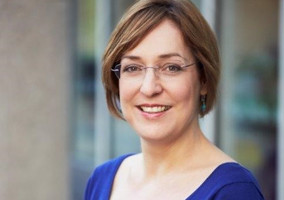National education charity Teach First has reported a class pay gap of 4.6% in its first year of reporting.
This means that on average, working-class employees make 95p for every £1 colleagues from higher socio-economic backgrounds make.
A total of 26% of its employees come from working-class backgrounds, according to the data.
The charity said it faced challenges collecting the data but said it was important to do so to improve representation within the organisation.
Underrepresentation of working-class staff in highest pay grade
Some 592 employees gave data about their socio-economic backgrounds. Teach First has 821 employees in total, according to data filed with the Charity Commission.
The data, which was taken from the snapshot date of April 2023, showed an underrepresentation of working-class staff in its highest pay quartile.
Some 22% of employees in the highest pay grade were from working-class backgrounds, with the remaining 78% from an intermediate or professional class.
But Kate Wiggins, the charity’s head of people, partnering, and development, said it was encouraging to see that 30% of employees in its second-highest pay grade were from a working-class background.
This was the highest proportion of working-class staff it had in any pay quartile.
“That tells us we’ve got a really good and significant talent pool within that group,” she told Civil Society.
The charity also asked if its employees had been eligible for free school meals at any point. Some 17% said yes, 67% said no and the remaining 16% did not know, preferred not to say or did not answer.
‘What gets measured gets managed’
Teach First’s report outlines actions the charity will take to address its class pay gap. These included recruiting more entry-level roles and removing barriers to entry like removing the need for a degree for most roles.
Since reporting its class pay gap, the charity has invited more people from a working-class background onto its emerging leaders’ programme.
“We take a really transparent approach to data and take the view that what gets measured gets managed and gets done,” said Wiggins.
“That gives us a level of accountability in our work, and it gives us the baseline to be working from to really understand what representation looks like in the charity and what that experience looks like for people from a variety of different backgrounds, so that we can create an organisation where everyone can flourish and bring their whole selves to work.”
Challenges in measuring socio-economic background
Identifying how to measure class was one of the main challenges of collecting the data, Wiggins said.
Teach First worked with its affinity group called the socio-economic class network to decide what the best measurement would be.
The charity followed the Social Mobility Commission’s guidance, which classifies three social groups: working class, intermediate and professional.
It decided to ask staff what their highest-earning parent’s occupation was at the age of 14.
This was “the best indicator” of socio-economic background and provided “reliable data”, Wiggins said, though she emphasised it was “not perfect”.
“It’s not perfect because when people report their class, it tends to be a lot of people will say they’re from a working-class background,” she said.
“Reports say that 60% of people will say they’re from a working-class background, whereas actually, going by this, it gives us the most reliable source and I think it does surprise people sometimes because they don’t necessarily think they might be in the background that shows up.”
“Another challenge was people have already given us their data on social mobility. And we needed to do a bit of a mini-campaign internally as to why it was really important for us to get this new data set when we already had some existing.
“It was really important to work with our affinity group employees in this experience and share what we were going to do with the data and why it was important.”
Why measure a class pay gap?
The report reads: “This isn’t about simply reporting more data. It’s about shining a light on how colleagues from a variety of backgrounds experience working at Teach First, so we can take action to help create a fairer and more equitable organisation.”
Wiggins echoed this sentiment when speaking to Civil Society.
“We’ve got this baseline of what the pay gap looks like, which means that we can now use it to put actions in place to improve the experience for employees at Teach First, whatever socio-economic background they come from.
“But also, vitally, for improving social mobility. That is a huge reason we’re here with a charity as well, that we can take action and walk the talk in terms of what we’re about. We’re about addressing inequality in education and inequality in society, so it makes sense to be kind of leading the way on this as well.”












